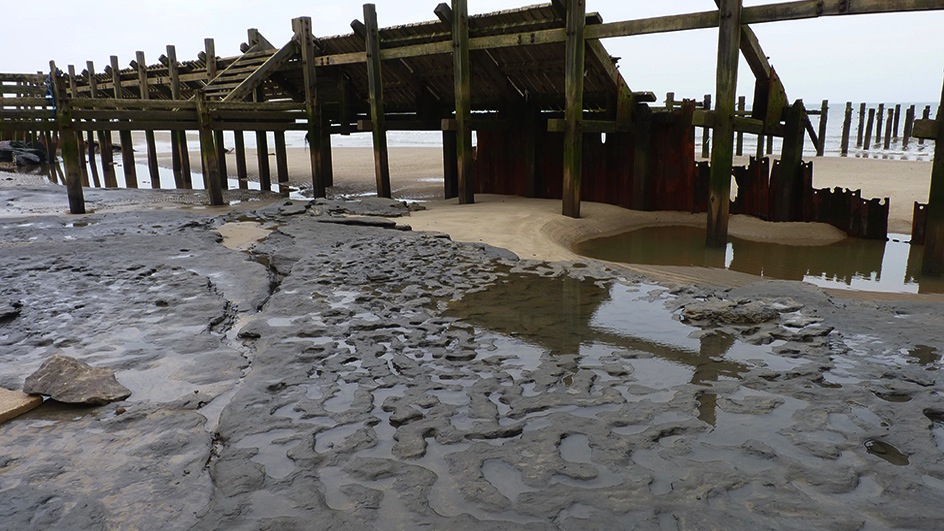Europe's Oldest Human Footprints Found

Footprints pressed into the mud of modern-day England more than 800,000 years ago might represent the oldest-known human tracks ever found in Europe, archaeologists say.
A storm exposed the footprints at the archaeologically rich coastal site of Happisburgh in Norfolk in May 2013. Scientists rushed to examine and document the fragile prints before they were washed away by waves within just two weeks. Images and 3D models, along with sediment cores from the site, suggest the impressions, left by a group of at least 12 people, are among the earliest ever found.
"They're without doubt the oldest human footprints in Europe and some of the oldest in the world," Simon Parfitt, an archaeologist with the Natural History Museum, said in a video explaining the finds. [10 Mysteries of the First Humans]
Scientists had already suspected humans lived at Happisburgh more than 800,000 years ago, because of stone tools found at the site. The landscape during this time would have looked much different than it does today. Britain would have been connected to mainland Europe and the River Thames flowed nearby Happisburgh, creating freshwater pools and marshes on the floodplain. The climate may have been even cooler than it is now. According to the British Museum, the summers were probably just as warm as summers in southern Britain today, but mean winter temperatures were likely lower. Conifer forests dominated the scenery, and the site was home to giant beavers, rhinos and mammoths.
Scientists have yet to discover any fossilized bones of the people who left their footprints at Happisburgh, so they can't be certain about species that lived at the site.
"But we know from the age of the site, that in southern Europe there's a species called Homo antecessor, and it's possible that these tracks are actually the footprints left by that early human species," Parfitt added.
The variation in the size of the prints also suggests the group included men, women and children of various ages, ranging in height from 2.9 feet to 5.5 feet tall (0.9 to1.7 meters), the researchers say.
Get the world’s most fascinating discoveries delivered straight to your inbox.
"The latest 3D models show these prints in incredible detail and by measuring the footprints, by looking at the length and the width, we can actually reconstruct the height and the body weight of the individuals," Parfitt said.
The discoveries will be detailed in the journal PLOS ONE and also featured in London's Natural History Museum in an exhibition called "Britain: One Million Years of the Human Story," which opens on Feb. 13.
Follow Megan Gannon on Twitter and Google+. Follow us @livescience, Facebook & Google+. Original article on Live Science.



